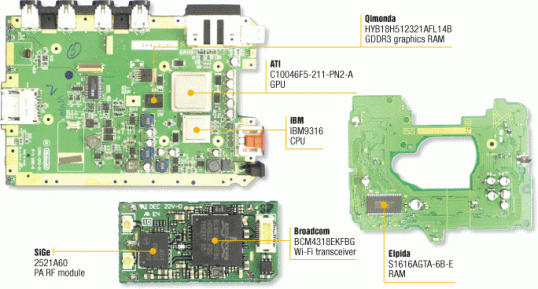• Nintendo devices get stamped as ‘under-powered’
Stephen talks about this a bit at 19:05 saying how the 3DS that seemed so impressive last year feels frozen in amber this year.
The Wii’s a shining example of what makes people think of Nintendo hardware in this way. Leading up to the system’s launch in 2006, while Microsoft and Sony focused on bringing their new games and consoles to a full hi-def 1080p resolution, Nintendo opted to make the Wii a standard-def box. Hell, it was hard to even find Wii component cables for a while. While Nintendo argued at the time that the consumers they were targeting mostly had standard-def sets, it ignored the fact that HDTV adoption would only continue to grow over the life cycle of their console.
The Wii’s graphical shortcomings make it so that any game that looks impressive feels like a major accomplishment. Nintendo’s first-party work always looks good on the Wii, but it’s rare that third-party games—like Epic Mickey—look as good. When titles come for all three consoles, the Wii version’s always the runt of the litter, often seeming like an afterthought.
Graphics aren’t everything, but the purported Wii U specs all speak to components that are currently out. These aren’t next year’s bleeding edge processors. This middle-ground philosophy affects other parts of Nintendo’s products, too.
The Wii doesn’t play DVDs and neither will the Wii U. Decisions like this make the Wii U more game-centric, which is always the focus for Nintendo, but may make it less attractive than devices that multi-task with other entertainment functions. In similar fashion, the 3DS launched without a web browser or download store, meaning that the only thing you would use it for was gaming. When I interviewed Iwata earlier this year, he indicated that the Wii U might have streaming capabilities. It should, since it’s a device built around the idea of place-shifting video. It’s just a matter of how Nintendo wants to use that functionality.
(MORE: Wii U Specs Disclosed, Including 25GB Optical Discs)
Perhaps the biggest middle-ground compromise with the Wii U is the decision to bind only one touchscreen controller to the console base unit. The reason for this appears to be processing power. Wii U base units may not have the juice to stream to multiple touchscreens and those touchscreens reportedly may have very little processing power of their own. This could make games on the Wii U less social than on the Wii, which seems like a step back from the gains of the Wii.
Yeah, a lot of this is speculation but based on we know about Nintendo’s decision-making in the past, you have to wonder if they’ll change things up in the future.
MORE: The Nintendo Difference: What’s at Stake for Mario’s Kingdom
Evan Narcisse is a reporter at TIME. Find him on Twitter at @EvNarc or on Facebook at Facebook/Evan.Narcisse. You can also continue the discussion on TIME’s Facebook page and on Twitter at @TIME.


